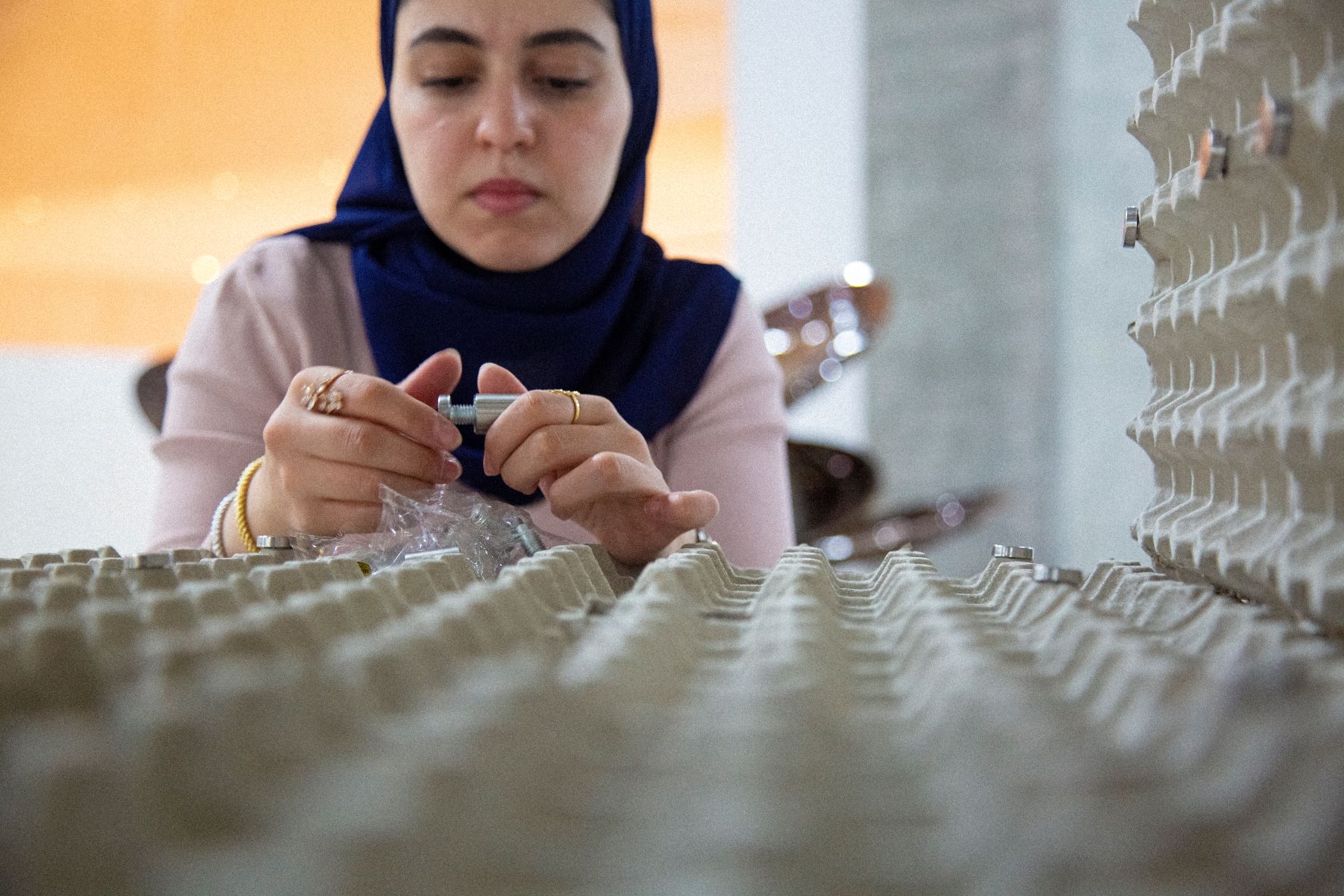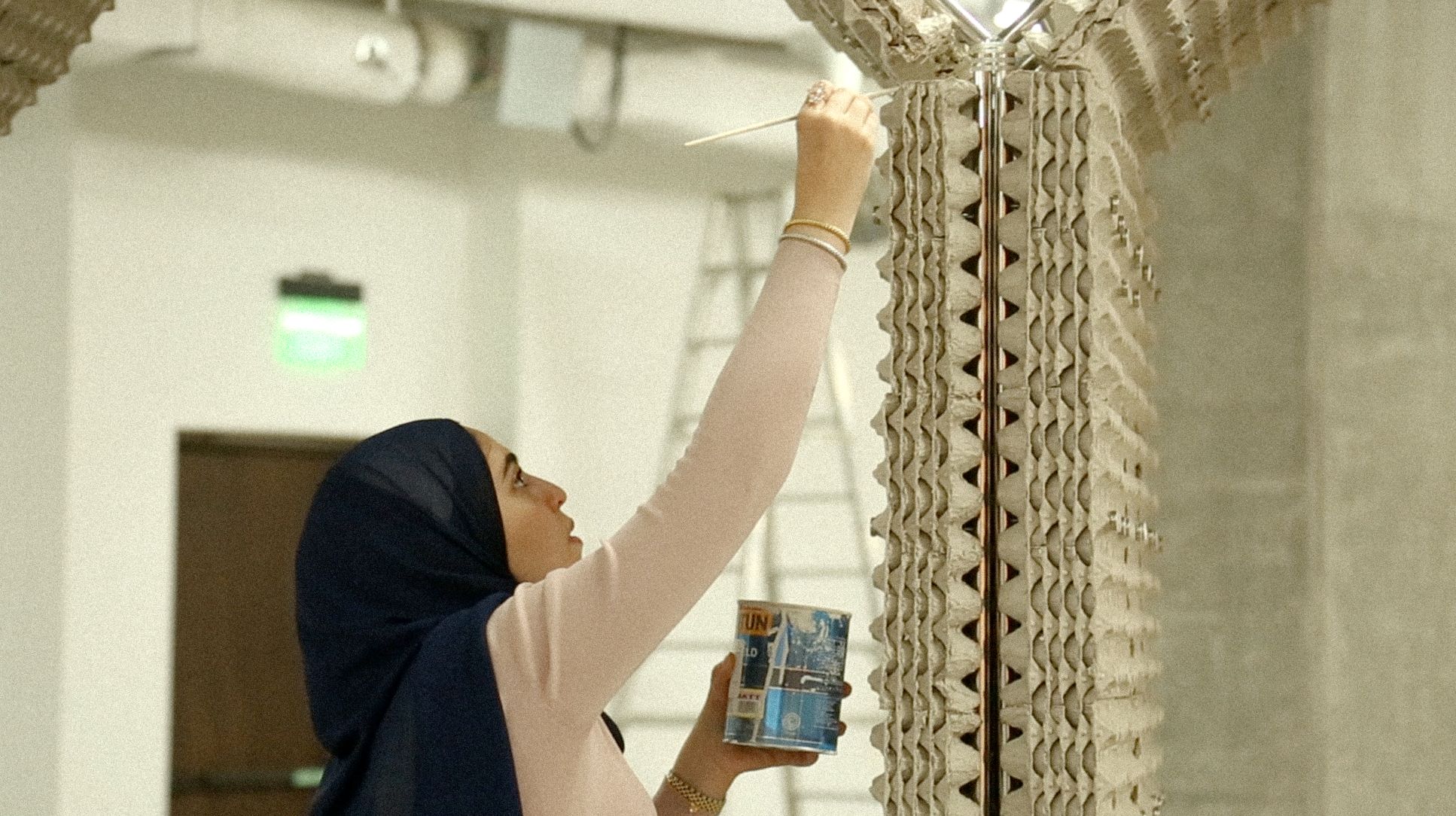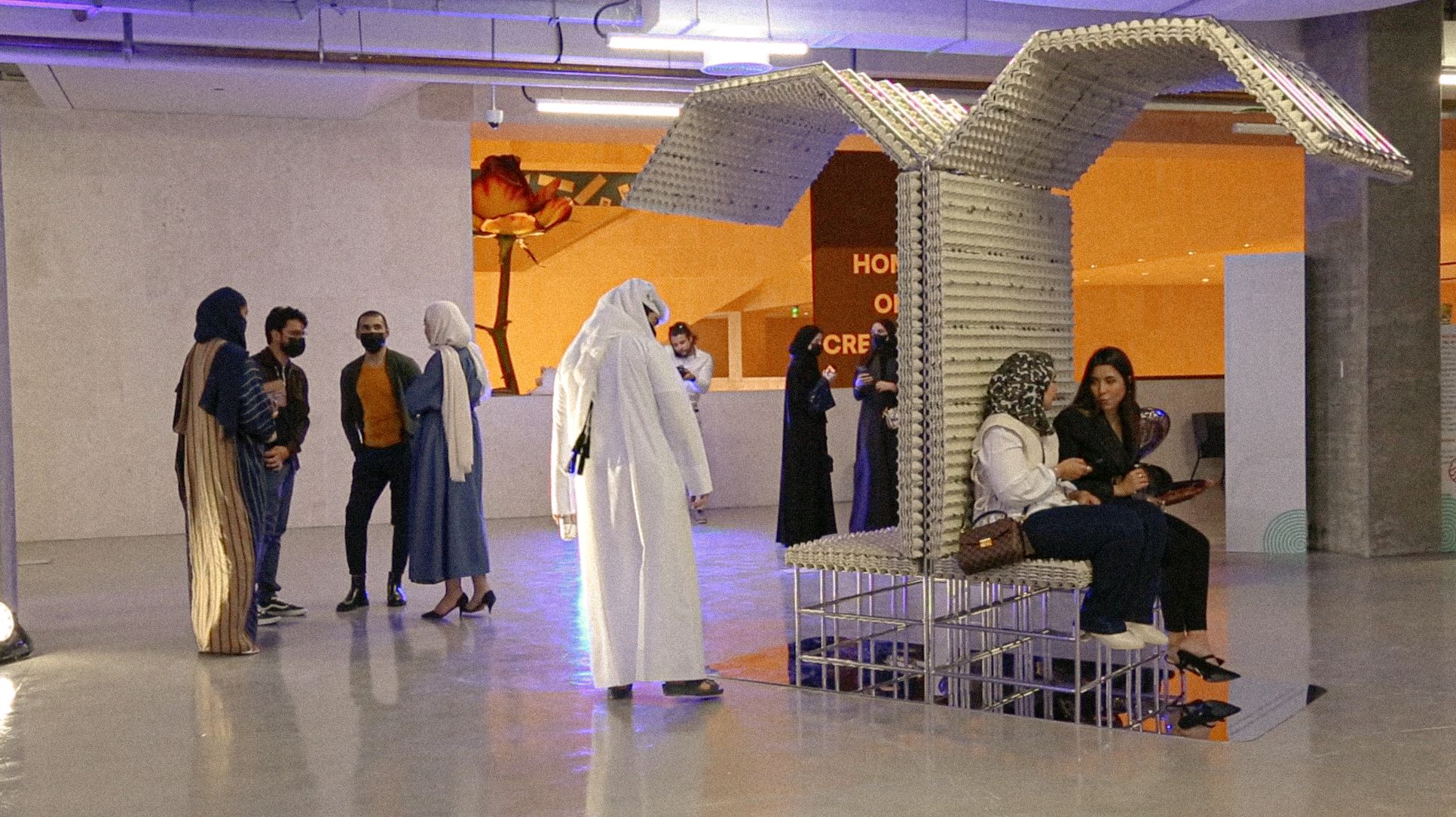- Academics
- Admissions
- Enrollment & Registration
- Research
- Academic & Creative Spaces
- Strategic Partnerships
- Our Impact
- Student Affairs
- Alumni
- About VCUarts Qatar
- Community & Continuing Education
ADMISSIONS FOR FALL 2025 NOW OPEN
A VCUarts Qatar Alumna Takes Sustainability to the Next Level
March 1, 2023

A piece of furniture inspires eco-consciousness and wins a Rossana Orlandi Ro Plastic Prize
Three hundred and eighty four egg crates – that’s what went into a piece of furniture created by a VCUarts Qatar alumna.
Nada Raafat Elkharashi, who graduated from VCUarts Qatar with a BFA in Interior Design in 2017, and an MFA in Design in 2021, created a unique public seating structure in response to Qatar Museum’s (QM) open call on the theme ‘Reuse, Recycle and Reduce’.

The piece of furniture was exhibited during Milan Design Week 2022, as part of the Rossana Orlandi Ro Plastic Exhibition. It was selected as a finalist for the international Rossana Orlandi Ro Plastic Prize 2022: Urban and Public Design and went on to win third place in the category.
The Ro Plastic Prize is the international award of ‘RoGUILTLESSPLASTIC’. The award has been drawing the attention of an increasing number of designers, innovators, entrepreneurs, startups, scientists, researchers, and communication experts who are passionate about creating extraordinary and impactful projects that involve the reuse of waste.
The piece of furniture, with back-to-back sitting spaces and a perforated shade that lets in the flickering light, was first unveiled in M7 in Msheireb Downtown Doha, during a ‘Qatar Creates’ event last year.

Elkharashi explains how the concept for the seat stemmed from her interest to re-imagine a healthier, more mindful everyday world while at the same time involving the community.
“The design calls for collecting local egg crates from the community, big supermarkets, chicken farms, and, most importantly, from individual households,” she says. “For this seat, I collected unused egg crates from local hypermarkets such as Lulu and Carrefour. I also purchased recycled pulp egg crates, to fill in certain spaces. But for future public seat collections, all crates will be collected locally, categorized according to size, and used for production.
The VCUarts Qatar alumna says that in the long run, the concept and final product should motivate residents to have designated bins to dispose of their daily share of egg crates.
“Such projects are necessary as an initial step toward mindfulness, to spark a connection that can potentially change user actions and conscious behavior,” she says. “This is also why I designed the seat using egg crates in its original form, without major manipulations such as shredding, melting, etc. allowing users to see a common disposable object in an unusual yet functional role, in public spaces.”
According to Elkharashi, the design and implementation of the furniture piece can be adapted to the number of egg crates collected, making it similar to a modular system where individual components can be added or removed. The core is designed using a metal brace, and screws. The cartons are assembled as one longitudinal cladding module, making the seat firm and functional. The more egg crates are collected, the more cladding modules can be joined as separate extensions at the top or on the sides.
Elkharashi explains how as time passes, and the cartons degrade, only the metallic brace and the screws of the main structure will remain, leaving the public with a visual reminder to gather and replace the degraded crates with another batch of reused egg crates that are locked on the metal brace using the screws that protrude from it.
“The seat visually communicates and celebrates the natural life span of physical change,” she says. “It exhibits the aging qualities of the egg crates to the public, showing its journey through its youth, aging, and then final degradation. It shows its shedding, tears, marks from previous users, and foreign physical appearance after the expiration date. This aspect of the design triggers a shift in people’s behavior to respecting the life of a non-living organism, and in turn, discourages shallow living.”
Elkharashi says she has always been interested in observing local behavior within a community, understanding a situation, and responding to it within the same communal understanding and resources. Yet the designer, who has a LEED qualification, says she doesn’t consider herself someone who advocates exclusively for sustainability.
“I don’t find the typical understandings of sustainability interesting,” she points out. “Even though I practice sustainable measures, I redefine the objective of sustainability. To me, it’s about being mindful and aware of what you touch and how it interacts with you. The understanding can be in the form of how you drink water or how the water behaves in your body. It is about constantly thinking and asking, ‘what else?’, ‘what about?’ and ‘what if?’. It is about advancing the quality of life, and increasing the overall well-being of individuals and communities to foster positive attitudes and better living within the community.”
“I see myself as an advocate for positive change; as a designer who integrates cultural advancement, biology, and philosophy to understand how form and objects inform decisions on humans. And that’s what led me to create this seating installation.”

